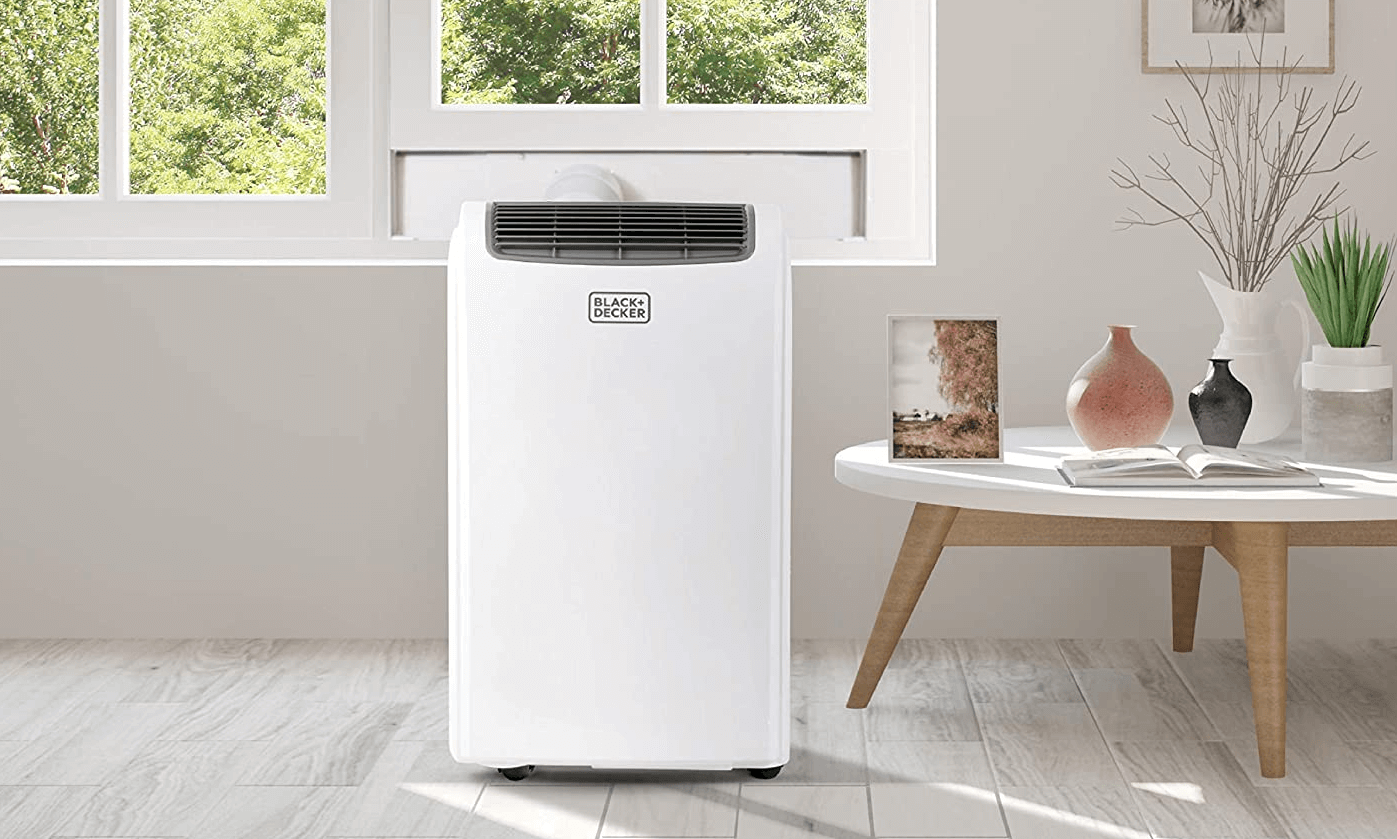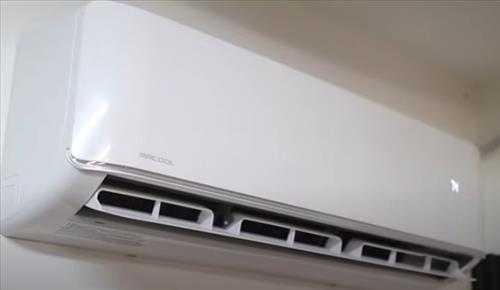Air Conditioner For Small Room No Window

Cooling a small room without a window presents a unique challenge. Traditional window air conditioners, the go-to solution for many, are simply not an option. This article explores the best alternative cooling solutions, weighing their pros, cons, costs, and suitability for various needs. We'll examine options suitable for homeowners, renters, and facility managers looking for efficient and effective cooling.
Understanding the Cooling Challenge
The fundamental issue is heat rejection. Air conditioners don't eliminate heat; they move it. A traditional air conditioner pulls heat from inside a room and exhausts it outside. Without a window, that heat has nowhere to go, making the cooling process ineffective. Therefore, solutions for windowless rooms must address this exhaust requirement.
Portable Air Conditioners: A Common Solution
Portable air conditioners are self-contained units designed to be moved from room to room. They cool air using a refrigerant cycle, similar to a window unit, but they exhaust hot air through a flexible hose. This hose typically vents to the outside via a window kit (yes, even though we're discussing "no window" scenarios, we'll address alternatives). Key aspects of portable ACs include:
- BTU (British Thermal Units) Rating: This measures the cooling capacity. A higher BTU rating is suitable for larger rooms. For a small room (e.g., 100-200 square feet), a 5,000-8,000 BTU unit is usually sufficient.
- Single-Hose vs. Dual-Hose: Single-hose units draw air from inside the room to cool the condenser, then exhaust a portion of that already cooled air outside. This creates negative pressure, potentially drawing in warm air from other areas. Dual-hose units draw air from outside the room for the condenser, making them more efficient and effective. Consider dual-hose models for optimal performance.
- Noise Level: Portable ACs can be noisy. Check the decibel (dB) rating. Lower dB values indicate quieter operation.
- Energy Efficiency: Look for models with a high Energy Efficiency Ratio (EER). The higher the EER, the more efficient the unit. Also, consider models with programmable timers and sleep modes to conserve energy.
Venting Options Without Windows:
While named "air conditioner for small room no window", portable units can still use creative methods to vent. Consider these alternatives:
- Through-the-Wall Venting: If permitted, a hole can be cut through an exterior wall to vent the exhaust hose. This is a more permanent solution, requiring professional installation, but it's more effective than other methods.
- Venting into a Drop Ceiling (with Caution): In some cases, the exhaust hose can be directed into a drop ceiling, provided the space above the ceiling is well-ventilated and leads to the outside. This is generally not recommended due to the potential for heat buildup and moisture issues, which could lead to mold growth. Consult with an HVAC professional before considering this option.
- DIY Window Alternatives: Fabricating a temporary vent using plywood or thick cardboard can be a short-term solution. Cut a hole for the exhaust hose and seal the edges to prevent air leakage. This is less effective than a proper window kit or through-the-wall venting.
Evaporative Coolers (Swamp Coolers): An Alternative in Dry Climates
Evaporative coolers, also known as swamp coolers, use the principle of evaporation to cool air. They draw air through a wet pad, causing water to evaporate and lower the air temperature. This method is most effective in hot, dry climates with low humidity. In humid environments, evaporative coolers are largely ineffective and can make the room feel damp and uncomfortable.
- Effectiveness: Works best when humidity is below 50%.
- Water Reservoir: Requires regular refilling of the water reservoir.
- Maintenance: Needs regular cleaning to prevent mold and algae growth.
- Cost: Generally less expensive than portable air conditioners.
Ductless Mini-Split Systems: A More Permanent Solution
Ductless mini-split systems offer a more permanent and efficient cooling solution. These systems consist of an outdoor compressor unit and one or more indoor air handlers. The air handlers are mounted on the wall or ceiling and connected to the outdoor unit via refrigerant lines and electrical wiring. Mini-splits don't require ductwork, making them ideal for rooms without existing duct systems.
- Installation: Requires professional installation, including drilling a small hole through the wall for the refrigerant lines.
- Efficiency: Highly energy-efficient, with SEER (Seasonal Energy Efficiency Ratio) ratings often exceeding 20.
- Heating and Cooling: Many mini-split systems provide both heating and cooling.
- Zoning: Allows for independent temperature control in each zone (room).
Mini-splits are often the best long-term cooling option for rooms without windows because they offer superior energy efficiency, quieter operation, and more precise temperature control compared to portable air conditioners. However, they are also the most expensive option upfront.
DIY Cooling Methods: Fans and Ventilation
While not true air conditioning, improving ventilation and using fans can significantly improve comfort levels.
- Circulation Fans: Strategically placing fans can help circulate air and create a breeze, making the room feel cooler.
- Exhaust Fans: Use exhaust fans in bathrooms and kitchens to remove hot, humid air.
- Window Fans (in Adjacent Rooms): If possible, use window fans in adjacent rooms to draw cooler air into the windowless room.
Cost Comparison and Lifespan
Understanding the costs and lifespan of each cooling solution is crucial for making an informed decision. Here's a general comparison:
| System Type | Initial Cost | Operating Cost | Lifespan |
|---|---|---|---|
| Portable Air Conditioner | $300 - $800 | Moderate to High | 5 - 10 years |
| Evaporative Cooler | $100 - $500 | Low | 3 - 7 years |
| Ductless Mini-Split | $1,500 - $5,000+ (installed) | Low | 15 - 20 years |
| Fans | $20 - $200 | Very Low | Varies |
Operating costs depend on electricity rates, usage patterns, and the unit's energy efficiency. Mini-splits generally have the lowest operating costs due to their high SEER ratings.
Choosing the Right Solution
The best cooling solution for a small room without a window depends on several factors, including:
- Budget: Consider both the initial cost and the long-term operating costs.
- Climate: Evaporative coolers are only suitable for dry climates.
- Room Usage: How often is the room used, and for what purpose?
- Installation Requirements: Are you willing to invest in professional installation, or do you prefer a DIY solution?
- Permitting: Check with your local authorities regarding regulations for through-the-wall venting or mini-split installations.
For infrequent use or tight budgets, a portable air conditioner with careful venting may be sufficient. For long-term comfort and energy efficiency, a ductless mini-split system is the superior choice. Evaporative coolers are a viable option in dry climates, while fans and ventilation can provide supplemental cooling.
Professional Consultation
Before making a final decision, it's always recommended to consult with a qualified HVAC technician. They can assess your specific needs, recommend the most appropriate cooling solution, and provide expert installation services. A professional can also advise on proper venting techniques and ensure that your chosen system meets local building codes and regulations. Consider having a load calculation performed to accurately determine the necessary cooling capacity for your specific room dimensions and insulation levels. A proper load calculation prevents both under-sizing (insufficient cooling) and over-sizing (inefficient operation) of the air conditioning unit.





:max_bytes(150000):strip_icc()/ms-ac-composite-amazon-frigidaire-13f291ef782a4402a1626b4f65d851cf.jpg)




